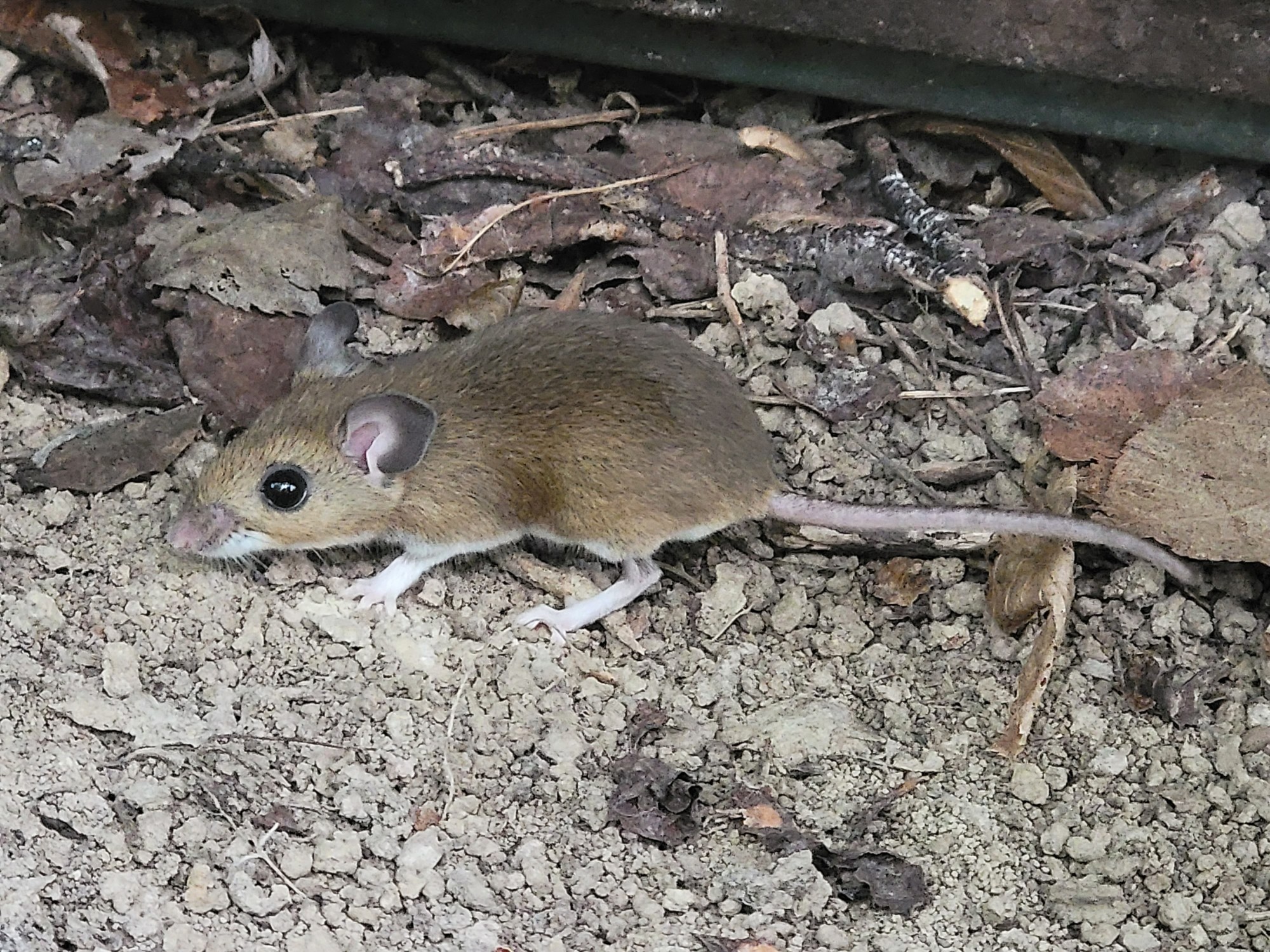 |
 |
|
White-footed Deermouse - Peromyscus leucopus Cricetidae Members: | Search Common: Search Scientific: |
|
|
||||||
 Photo by: Parker Backstrom, Holly Weston |
| Distribution |
In NC, it is found essentially statewide, but is scarce in a few southeastern Coastal Plain counties, though there is at least one record each from Brunswick and Pender counties. Occurs over nearly all of the eastern and central United States, and barely into southern Canada. It ranges south to southeastern NC, LA, and TX, but is absent in the extreme Southeast (FL and adjacent coastal areas). | |
| Abundance | Generally abundant over the range in NC, except less numerous near the coast, and more scarce in the southeastern quarter of the Coastal Plain. Also, less numerous at high elevations, where it is generally replaced by the North American Deermouse. Considered to be the most numerous mammal in the state, in terms of total number of individuals. Note that the iNaturalist website contains photos for many of the state's mountain and Piedmont counties, and the editors have not taken the time to update the map with "Photo" records/documentation across the entire state unless the county had previously no known records (white on the map). | |
| Seasonal Occurrence | Active year-round. | |
| Habitat |
Favors hardwood forests of a wide variety. Most numerous in mesic to dry forests, but also occurs in bottomlands, as well as various thickets and brushy areas. It is infrequent in fields, but is can occur there, as well as in marshes. Scarce to absent in spruce-fir forests, as well as some coastal forests such as pocosins. It does occur in some buildings in wooded areas. See also Habitat Account for General Oak-Hickory Forests | |
| Behavior | Primarily nocturnal in activity. It swims and climbs fairly well, though it stays primarily on the ground. | |
| Comments |
The species is somewhat replaced at the higher elevations by the North American Deermouse, but it does occur to the highest peaks; Linzey (1995) notes a record to 6,500 feet in the Great Smoky Mountains National Park. On the other hand, this species broadly overlaps the similar Cotton Deermouse in the Coastal Plain, and both are found in bottomlands and some other forested habitats, though the latter species favors wetter habitats than does the White-footed. In 2022, the N.C. Natural Heritage Program no longer is tracking this easti subspecies. | |
| Origin | Native | |
| NC List | Official | |
| S5 | ||
| State Status | ||
| G5 | ||
| Federal Status | ||
| subspecies |
Peromyscus leucopus leucopus, Peromyscus leucopus easti (State Special Concern), Peromyscus leucopus buxtoni (State Special Concern) Peromyscus leucopus easti [the Pungo White-footed Deermouse] occurs along the Outer Banks, north of Oregon Inlet, into adjacent coastal VA; it is known only from Currituck County in the state. Peromyscus leucopus buxtoni [the Buxton Woods White-footed Deermouse] is restricted to the Buxton Woods portion of Hatteras Island (Dare County). Peromyscus leucopus leucopus occurs over the remainder of the state. | |
| other_comName | White-footed Mouse | |
| synonym | ||
| NC Map Map depicts all counties with a report (transient or resident) for the species. | Click on county for list of all database records for species in that county. |